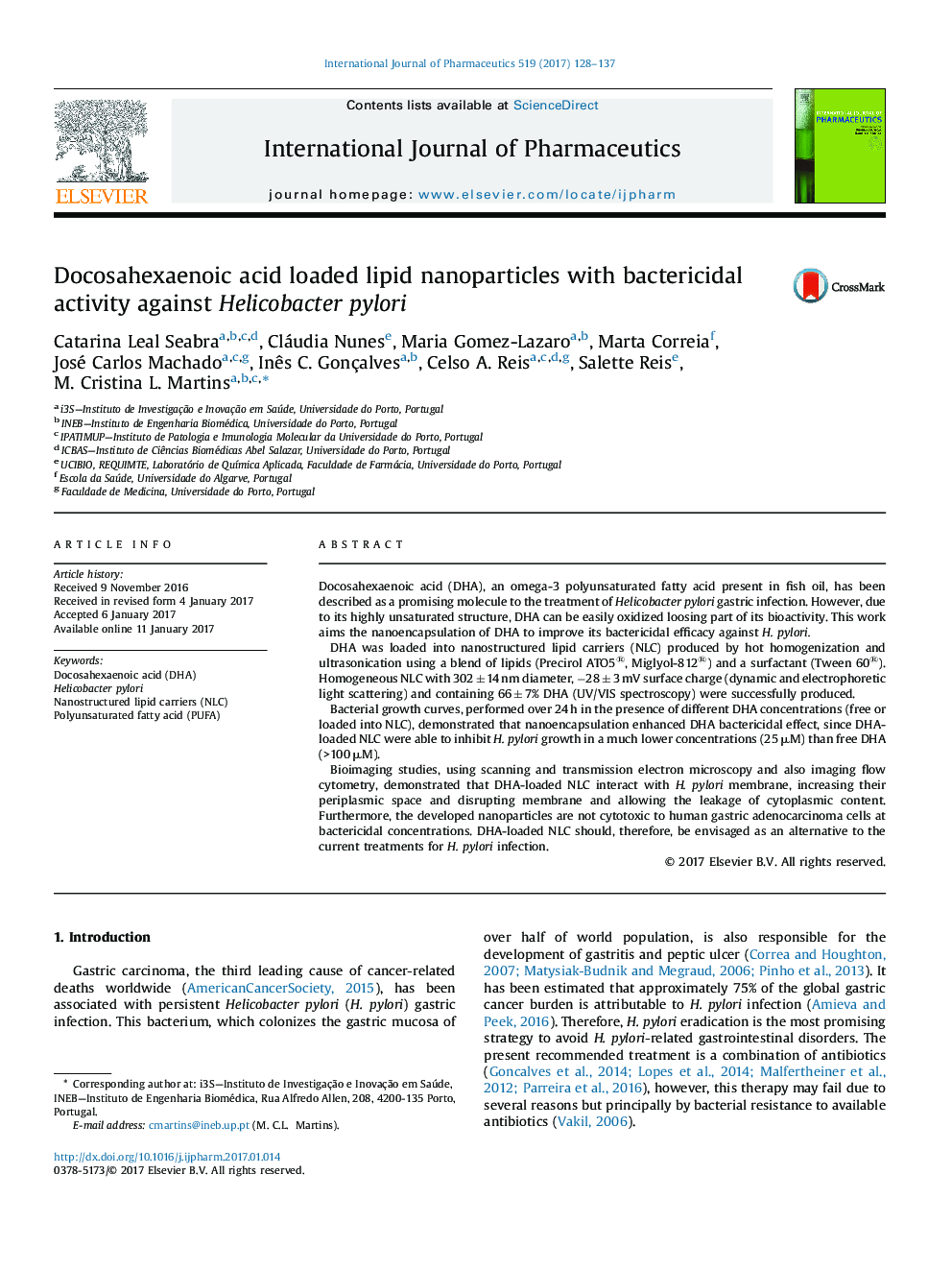| Article ID | Journal | Published Year | Pages | File Type |
|---|---|---|---|---|
| 5550705 | International Journal of Pharmaceutics | 2017 | 10 Pages |
Docosahexaenoic acid (DHA), an omega-3 polyunsaturated fatty acid present in fish oil, has been described as a promising molecule to the treatment of Helicobacter pylori gastric infection. However, due to its highly unsaturated structure, DHA can be easily oxidized loosing part of its bioactivity. This work aims the nanoencapsulation of DHA to improve its bactericidal efficacy against H. pylori.DHA was loaded into nanostructured lipid carriers (NLC) produced by hot homogenization and ultrasonication using a blend of lipids (Precirol ATO5®, Miglyol-812®) and a surfactant (Tween 60®). Homogeneous NLC with 302 ± 14 nm diameter, â28 ± 3 mV surface charge (dynamic and electrophoretic light scattering) and containing 66 ± 7% DHA (UV/VIS spectroscopy) were successfully produced.Bacterial growth curves, performed over 24 h in the presence of different DHA concentrations (free or loaded into NLC), demonstrated that nanoencapsulation enhanced DHA bactericidal effect, since DHA-loaded NLC were able to inhibit H. pylori growth in a much lower concentrations (25 μM) than free DHA (>100 μM).Bioimaging studies, using scanning and transmission electron microscopy and also imaging flow cytometry, demonstrated that DHA-loaded NLC interact with H. pylori membrane, increasing their periplasmic space and disrupting membrane and allowing the leakage of cytoplasmic content. Furthermore, the developed nanoparticles are not cytotoxic to human gastric adenocarcinoma cells at bactericidal concentrations. DHA-loaded NLC should, therefore, be envisaged as an alternative to the current treatments for H. pylori infection.
Graphical abstractDownload high-res image (81KB)Download full-size image
